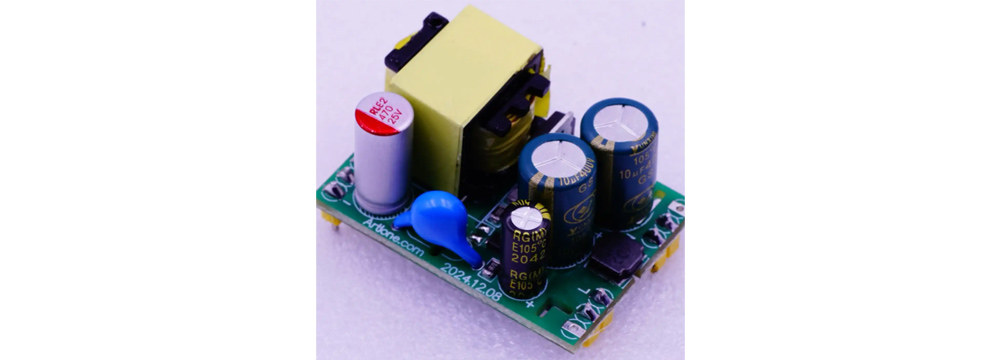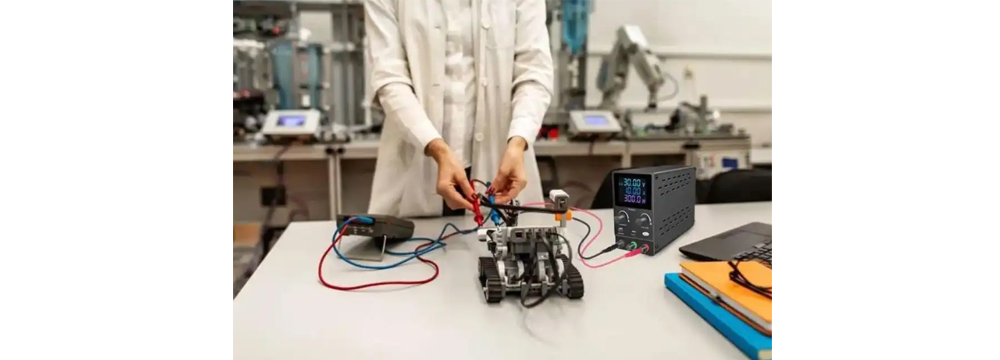In modern electronic devices and industrial applications, adjustable DC power supplies and switching power supplies are two common power supply solutions, each with unique advantages and applicable scenarios. Adjustable DC power supplies are widely used in laboratory testing, precision instrument power supply and other fields due to their stable output, low noise and high regulation accuracy; while switching power supplies have become the first choice for mass production of consumer electronics, communication equipment, etc. due to their high efficiency, small size and low cost. However, there are also obvious differences between the two power supplies in terms of performance, efficiency, complexity and other aspects. This article will compare the advantages and disadvantages of adjustable DC power supplies and switching power supplies in detail.
1. Basic concepts of adjustable DC power supply and switching power supply
Adjustable DC power supply and switching power supply are two common types of power supplies, which differ in many aspects. Adjustable DC power supply mainly changes the output voltage and current by adjusting the components in the circuit to adapt to different equipment requirements. Its working principle is relatively simple, and it achieves precise control of the power supply by controlling the output of voltage and current. Adjustable DC power supply is usually used in occasions where voltage and current need to be precisely controlled, such as laboratory equipment, precision instruments, and industrial control systems.
Switching power supply uses the high-frequency switching action of the switch tube to control the output voltage and current. It has high efficiency and small size, and is the preferred power supply for many electronic devices at present. The working principle of switching power supply is relatively complex, and it achieves precise control of the power supply by controlling the switching frequency and time of the switch tube. Switching power supply is usually used in occasions with high requirements for power efficiency and volume, such as computers, communication equipment, and household appliances.
These two power supplies have their own advantages and disadvantages and are suitable for different application scenarios. When choosing a power supply, it is necessary to comprehensively consider the specific application requirements and equipment characteristics to select the most suitable power supply type.
2. Advantages and Disadvantages of Adjustable DC Power Supply
2.1 Advantages
2.1.1 Stable Output Voltage
One significant advantage of adjustable DC power supply is that the output voltage is very stable. This stability makes adjustable DC power supply very suitable for application scenarios that require high power stability, such as power supply for precision instruments. In these applications, even slight fluctuations in power supply output may cause abnormal operation of the equipment or measurement errors. Therefore, the stable output characteristics of adjustable DC power supply are particularly important.
2.1.2 Small Ripple
Another advantage of adjustable DC power supply is that the output ripple is small. Ripple refers to the AC component in the output voltage of the power supply, which may interfere with sensitive electronic equipment. The adjustable DC power supply effectively reduces the output ripple through high-quality filtering circuits, thereby ensuring the normal operation of the equipment. Especially in audio equipment and precision measurement equipment, a power supply with small ripple can significantly improve the performance and measurement accuracy of the equipment.
2.1.3 High Accuracy
The adjustable DC power supply has high adjustment accuracy and can meet the power supply requirements of precision instruments and laboratory equipment. In these applications, the accuracy of the power supply output directly affects the measurement accuracy and working state of the equipment. The adjustable DC power supply ensures high accuracy of power output through precise adjustment circuits and high-quality components, thereby ensuring the normal operation of the equipment and the accuracy of the measurement results.
2.1.4 Strong anti-interference ability
The adjustable DC power supply has strong anti-interference ability and can maintain stable output in complex electromagnetic environments. This makes the adjustable DC power supply very suitable for industrial control and medical equipment, which require high power stability. In these applications, the anti-interference ability of the power supply is directly related to the stability and reliability of the equipment.
2.1.5 Adjustability
The output voltage and current of the adjustable DC power supply can be adjusted as needed to meet the power supply requirements of different equipment. This adjustability makes the adjustable DC power supply highly flexible and can be widely used in various application scenarios. For example, in the laboratory, researchers can adjust the output voltage and current of the power supply according to the experimental requirements to meet the power supply requirements of different experimental equipment.
2.1.6 Wide application
The adjustable DC power supply is widely used in laboratories, industrial production, medical equipment and other fields. Its stability and high precision make it an indispensable power supply device in these fields. In the laboratory, the adjustable DC power supply is used to power various experimental equipment and instruments to ensure the accuracy and reliability of the experimental results. In industrial production, the adjustable DC power supply is used to power various automation equipment and control systems to ensure the stability and efficiency of the production process. In medical equipment, the adjustable DC power supply is used to power various medical equipment and instruments to ensure the normal operation of medical equipment and the safety of treatment.

2.2 Disadvantages
2.2.1 Large volume and weight
Since the adjustable DC power supply usually uses a linear transformer, its volume and weight are large, which is not convenient for movement and installation. The linear transformer has a low operating frequency and requires a larger core and coil, which leads to a larger volume and weight of the power supply. This makes the adjustable DC power supply limited in some application scenarios, especially in occasions with high requirements for equipment volume and weight.
2.2.2 Low efficiency
The energy conversion efficiency of the adjustable DC power supply is relatively low, resulting in energy waste. During the operation of the linear power supply, the adjustment tube works in the linear amplification area, generates large heat and has low efficiency. This makes the adjustable DC power supply consume a lot of energy during long-term operation, increasing the operating cost.
2.2.4 High cost
The manufacturing and maintenance costs of adjustable DC power supplies are relatively high, which increases the economic burden. Linear power supplies have high manufacturing costs because they require high-quality components and complex circuit design. In addition, the maintenance and repair of the power supply also require high costs, which increases the overall cost of the system.
3. Advantages and disadvantages of switching power supplies
3.1 Advantages
3.1.1 High efficiency
The switching power supply has a high conversion efficiency, which helps save energy. The switching power supply uses high-frequency switching technology to achieve a conversion efficiency of 70% to 80%, which is significantly higher than the adjustable DC power supply. This high efficiency not only reduces energy waste, but also reduces the operating cost of the equipment.
3.1.2 Small size and light weight
The use of high-frequency technology greatly reduces the size and weight of the switching power supply, making it easy to move and install. The high-frequency transformer replaces the traditional industrial frequency transformer, which greatly reduces the size and weight of the power supply. This makes the switching power supply more advantageous in many application scenarios, especially in situations where the size and weight of the equipment are required to be high.
3.1.3 High power factor
The power factor of the switching power supply is high, which reduces the burden on the power grid. The power factor is an important indicator to measure the efficiency of the power supply in the power grid. The switching power supply can significantly improve the power factor of the power supply through power factor correction technology, reduce the burden on the power grid, and improve the utilization efficiency of the power grid.
3.1.4 Wide voltage regulation range
The switching power supply can achieve stable output in a wide input voltage range and has strong adaptability. The switching power supply can achieve stable output in a wide input voltage range through complex control circuits and high-frequency transformers. This enables the switching power supply to maintain stable output under different power grid conditions and improves the adaptability of the equipment.
3.1.5 Fast dynamic response
The switching power supply reacts quickly to load changes and can adjust the output quickly. The switching power supply can achieve rapid adjustment of the output voltage and current through high-frequency switching technology, thereby quickly responding to load changes. This enables the switching power supply to perform well under dynamic load conditions and improves the stability and reliability of the equipment.
3.1.6 Low cost
The manufacturing cost of the switching power supply is low and has high economic benefits. The manufacturing cost of the switching power supply is low due to the use of high-frequency technology and simple circuit design. In addition, the high efficiency of the switching power supply also reduces the operating cost, thereby improving the overall economic benefits of the equipment.
3.1.7 Wide application
Switching power supplies are widely used in the fields of computers, communication equipment and household appliances. Its high efficiency and compactness make it the preferred power supply for these devices. In computers and communication equipment, switching power supplies are used to power various electronic components and modules to ensure the normal operation of the equipment. In household appliances, switching power supplies are used to power various household appliances to improve the performance and reliability of the equipment.

3.2 Disadvantages
3.2.1 Large output ripple
The output ripple of the switching power supply is large, which may affect the performance of some sensitive equipment. Ripple refers to the AC component in the output voltage of the power supply, which may interfere with sensitive electronic equipment. Due to the use of high-frequency switching technology, the output ripple of the switching power supply is large, which may interfere with some sensitive equipment.
3.2.2 Electromagnetic interference problem
The switching power supply may generate large electromagnetic interference, affecting the operation of other equipment. During the operation of the switching power supply, high-frequency electromagnetic radiation and electromagnetic interference will be generated, which may interfere with the operation of other equipment. In order to reduce electromagnetic interference, switching power supplies usually need to adopt complex electromagnetic compatibility design and filtering measures.
3.2.3 Complex control circuit
Switching power supplies require complex control circuits to stabilize the output, which increases the design difficulty. The switching power supply uses complex control circuits and high-frequency transformers to achieve precise control of the output voltage and current. This increases the design difficulty and manufacturing cost of the power supply.
3.2.4 Reliability issues
Under high-frequency working conditions, the life and reliability of components in the switching power supply face challenges. During the operation of the switching power supply, the switch tube and other components need to withstand high-frequency switching actions, which may pose challenges to the life and reliability of the components. In order to improve the reliability of the switching power supply, high-quality components and complex protection circuits are usually required.
4. Conclusion
4.1 Characteristics and applicable scenarios of adjustable DC power supply
Adjustable DC power supply has a wide range of applications in laboratory equipment, precision instruments, industrial control systems and medical equipment due to its advantages such as stable output voltage, small ripple, high precision and strong anti-interference ability. Its stability and high precision make it an indispensable power supply device in these fields. However, the adjustable DC power supply has large size and weight, low efficiency, high heat generation and high cost, which limits its use in some application scenarios.
4.2 Characteristics and applicable scenarios of switching power supply
Switching power supply has a wide range of applications in computers, communication equipment, household appliances, industrial automation equipment and new energy equipment due to its advantages of high efficiency, small size, light weight, high power factor, wide voltage regulation range, fast dynamic response and low cost. Its high efficiency and compactness make it the preferred power supply for these devices. However, the switching power supply has large output ripple, serious electromagnetic interference problems, complex control circuits and prominent reliability problems, which limits its use in some application scenarios.
4.3 Power supply selection recommendations
When selecting a power supply, comprehensive consideration should be given to the specific needs and application scenarios of the equipment. For application scenarios that require high stability and high precision, such as laboratory equipment, precision instruments and medical equipment, the adjustable DC power supply is an ideal choice. For application scenarios that require high efficiency, compactness and low cost, such as computers, communication equipment and household appliances, the switching power supply is an ideal choice. By properly selecting the power supply type, the performance and reliability of the equipment can be improved to meet the needs of different application scenarios.
Share our interesting knowledge and stories on social media














